Why is Japan constantly “shaking” and being covered by tsunamis (17 photos)
It is difficult to imagine more destructive natural phenomena than an earthquake and tsunami, which in the blink of an eye can wipe out entire cities along with their inhabitants. 
Earthquake in Japan
The consequences of such natural disasters are monstrous, and many countries exposed to increased seismic activity sometimes require a single year to recover from the consequences of another rampant disaster. 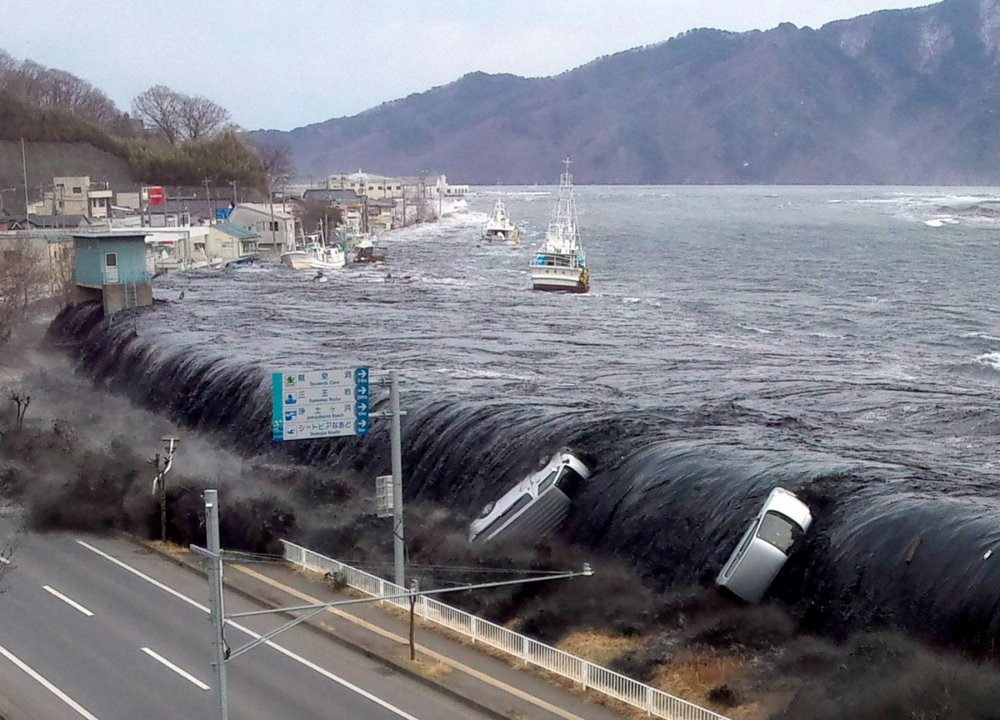
Tsunami in Japan
Such countries include Japan, for which tsunamis and earthquakes, no matter how strange it may sound, have already become something commonplace - a completely common phenomenon that the Japanese have learned to live with. 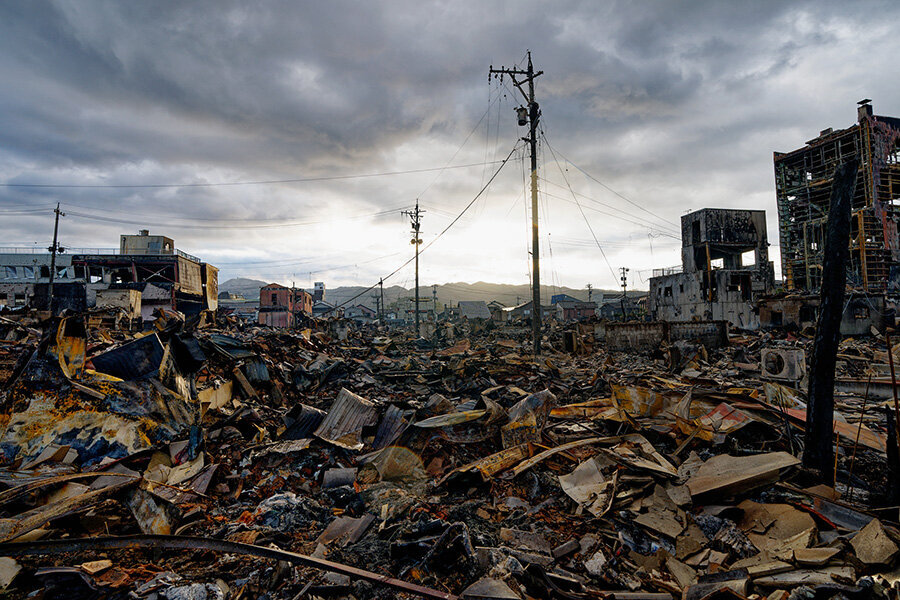
Earthquake in Japan
How could it be otherwise, if, according to scientists’ observations, small earthquakes occur in different parts of Japan almost every day! Moreover, when they began to be recorded at the end of the 19th century, it turned out that tremors of varying strength shook the Japanese islands about four times a day. On average, Japan is shaken by one and a half thousand earthquakes of varying strength per year, most of which, thank God, go unnoticed by the residents of this amazing country. 
Earthquake in Japan
Moreover, the Japanese have learned to treat the vicissitudes of fate philosophically - calmly and without panic. And after another, even small, “shaking”, they, as a rule, simply turn on the TV and go online to find out the details of what happened: for example, how strong the tremors were, what territory they covered, what the consequences are, where a tsunami could occur, and so on . Probably, the factor “Forewarned is forearmed” plays an important role in this matter. 
Japanese are taught from childhood how to behave during an earthquake.
But why exactly does Japan so often suffer from the destructive power of earthquakes and tsunamis? However, before answering this question, let us remember why such monstrous natural phenomena arise in principle. Most earthquakes are caused by the movement of faulty tectonic plates that occurs underground. When both sides of the plate, located at the edges of the fault surface, are displaced, vibrations arise, which are transmitted to the surface of the earth and, in fact, create shaking - that is, an earthquake. 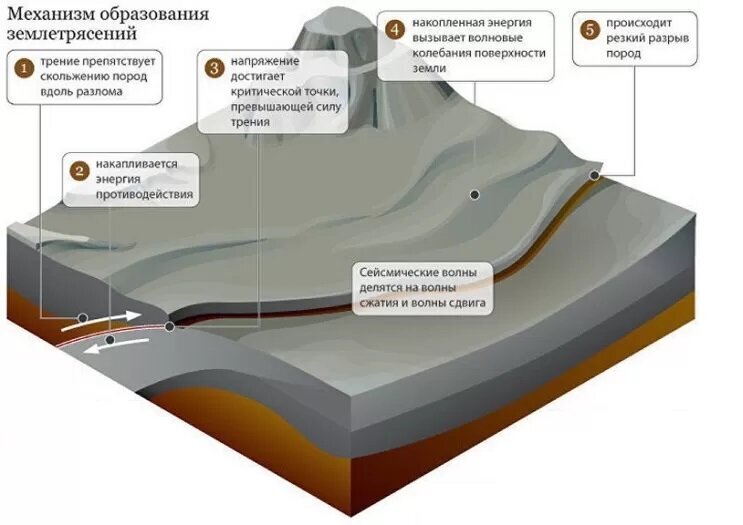
Mechanism of earthquake formation
If the movement of the fault occurs on the ocean floor, then a displacement of the bottom surfaces occurs, which, in turn, causes a tsunami. In general, the fault surfaces that cause an earthquake are held together by friction, but when a force greater than the frictional force is applied to the area, fracture occurs. The source of this force lies in the movement of bedrock covering the surface of the Earth, which are called plates. 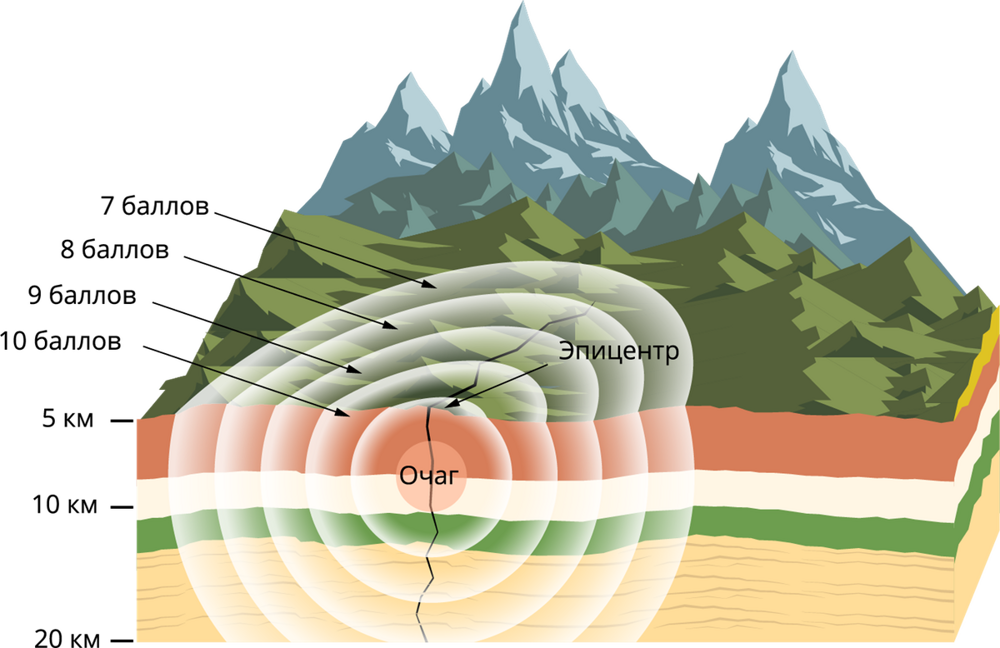
Mechanism of earthquake formation
Now for Japan. The secret of such frequent tsunamis and earthquakes lies in the geographical location of the land of the rising sun. Japan hit the jackpot in this matter, since it is located exactly at the junction of tectonic areas of the earth, or, more precisely, those very plates - the Eurasian, Pacific, Philippine and North American. 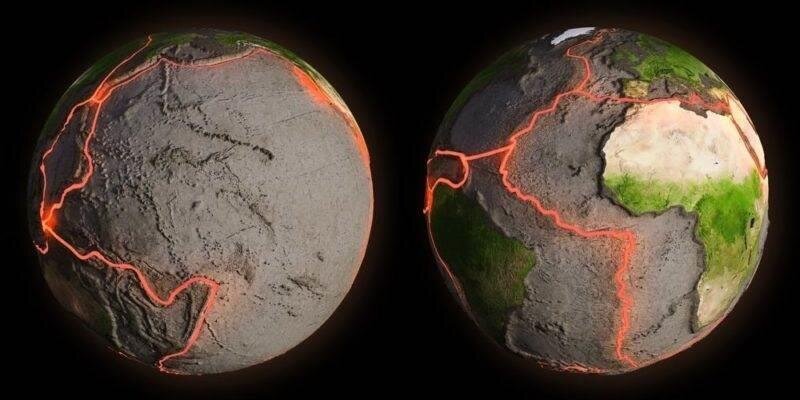
The Earth's lithosphere is divided into segments called tectonic plates
And if the Eurasian and North American plates, according to observations, behave calmly and their movements are almost imperceptible, then the Pacific and Philippine plates are extremely active. 
Slab layout
The Pacific plate, on which the Pacific Ocean is “poured” as if on a flat dish, periodically creeps under the Philippine plate at a speed of 9 centimeters per year (this process, by the way, is called subduction), and since the Philippine plate is heavier and the friction is high, the plates slide relative to each other each other does not happen smoothly: the bottom plate is constantly tprotects the edge of the top behind itself, thereby crushing it. Sometimes it happens that the lower plate suddenly slides down, and the upper one springs up, resulting in an earthquake. And the water above the plates, in turn, receives a powerful push - hence the tsunami. 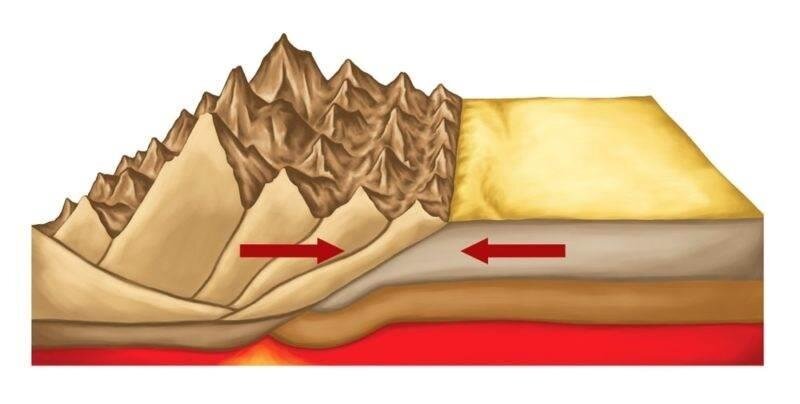
Collision of tectonic plates
Scientists also cite volcanic activity as another reason for frequent earthquakes in Japan. It's no joke, about 10% of all volcanoes on our planet are located in Japan! Currently, more than 40 Japanese volcanoes are active and about 160 more are dormant - however, they are scattered throughout Japan almost everywhere and are often located near small towns and villages. 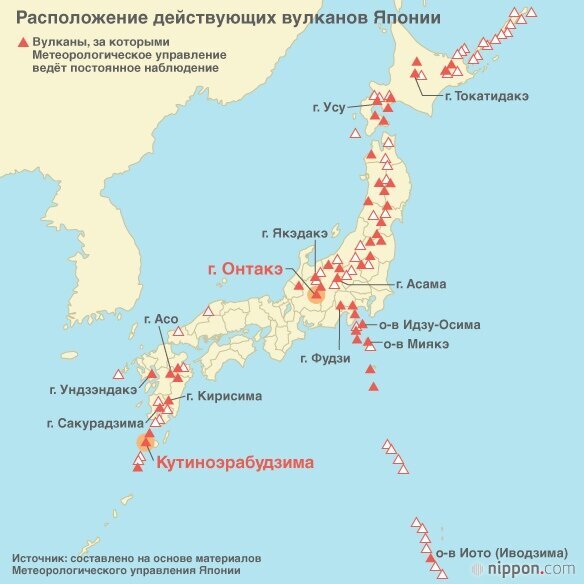
Volcanoes on the map of Japan
There is another very funny version, which, however, few people take seriously, but I will still voice it to you. They say that there is a direct connection between earthquakes in Japan and...snow. The fact is that in the spring, after heavy snow has melted, the earth, freed from gravity, straightens out like a spring, which, in fact, leads to an earthquake! This sounds funny, of course, but what the hell isn’t it... 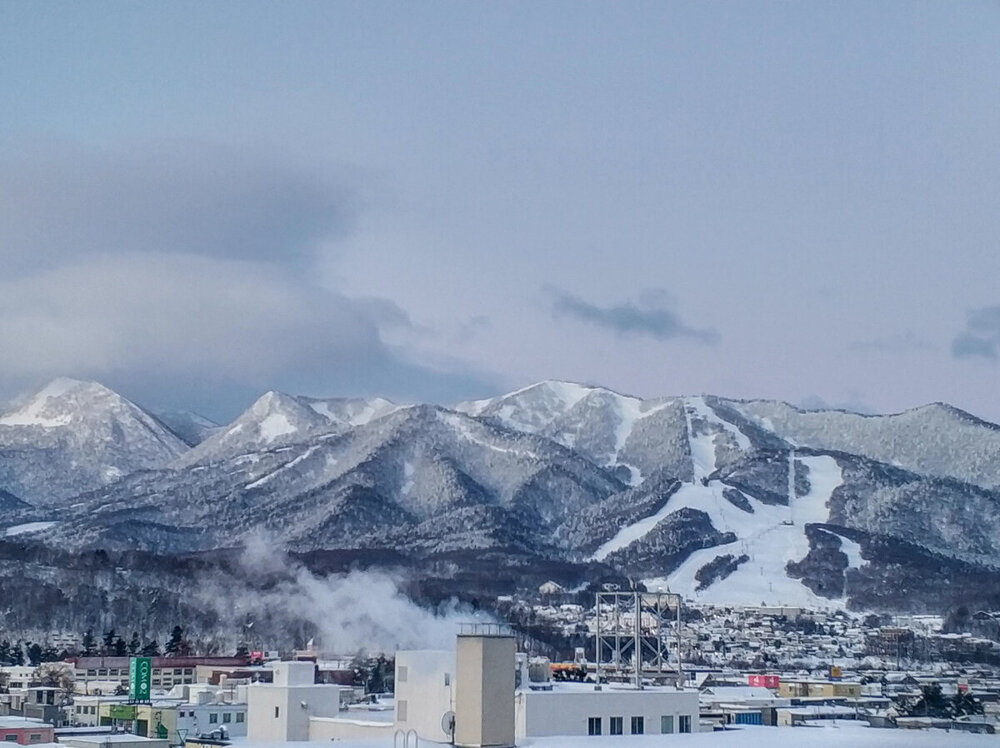
Snow in Japan
The reasons seem to have been sorted out, but here another important question arises: why do really large earthquakes occur with enviable frequency in Japan? In general, all earthquakes can be divided into three broad categories: plate boundary earthquake or interplate earthquake (occurs due to sliding between the downward-sinking oceanic plate and the plate above - I mentioned this above), intraplate earthquake (occurs inside the downward-plunging oceanic plate) and continental (occurs in an active continental fault). 
Earthquake in Japan
The most powerful of them are interplate earthquakes - their magnitude sometimes reaches 8-9 points, and it is these earthquakes that most often shake the territory of Japan. Intraplate and continental earthquakes are weaker, but because they occur at a depth of no more than 15 km, they can cause serious damage. 
Tsunami in Japan
Initially, the Japanese archipelago was part of Eurasia, but separated from it about 20 million years ago with the emergence of the Sea of Japan. As a result of this kind of transformation, a large number of tectonic faults were formed, which, in fact, are the sources of the main continental earthquakes of our time. 
Earthquake in Japan
Ideally, earthquakes should not disturb the inhabitants of the Earth too often, however, due to the fact that there are a lot of seismic sources in Japan, large earthquakes occur there with enviable regularity and have very destructive consequences. 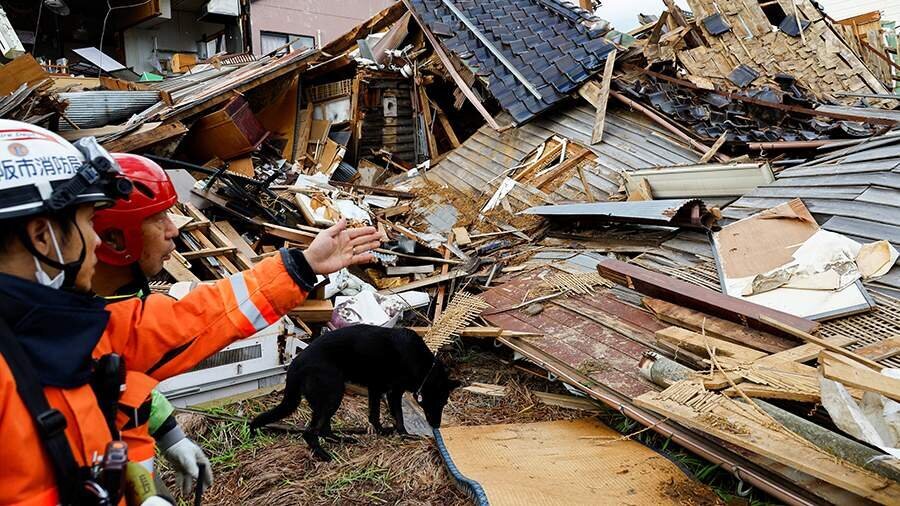
Earthquake in Japan
I repeat: it’s all in the bag, or, more precisely, in the geographical location of Japan. And, despite the fact that the authorities of the land of the rising sun allocate impressive funds for research centers involved in the study and forecasting of earthquakes, it is unlikely that this problem will be somehow solved in the near foreseeable future. Due to the peculiarities of their location, earthquakes and tsunamis will still remain almost the main problems of modern Japan. 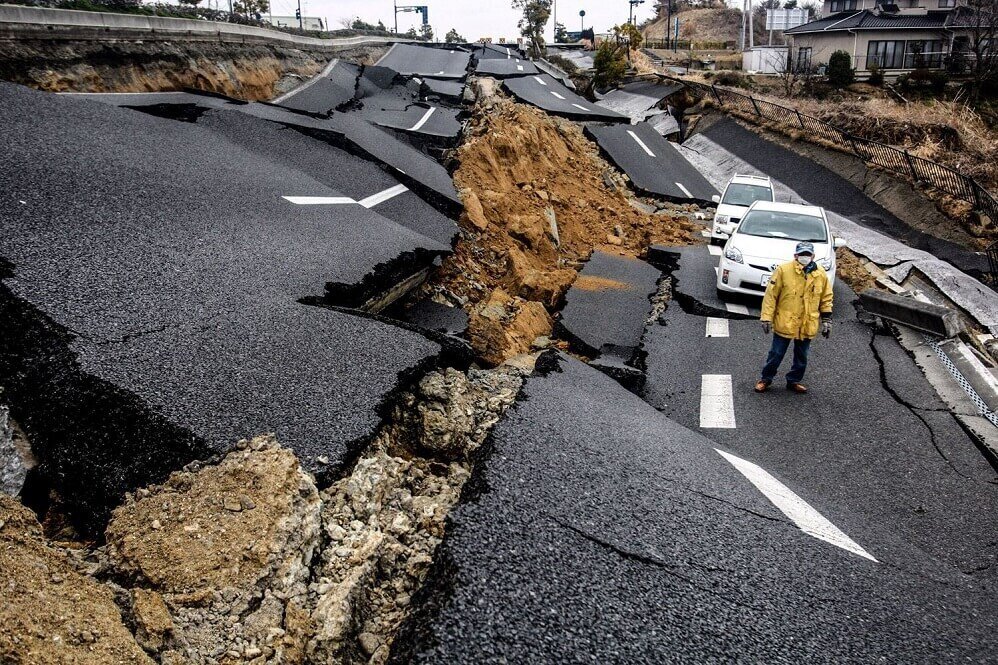
Earthquake in Japan






























